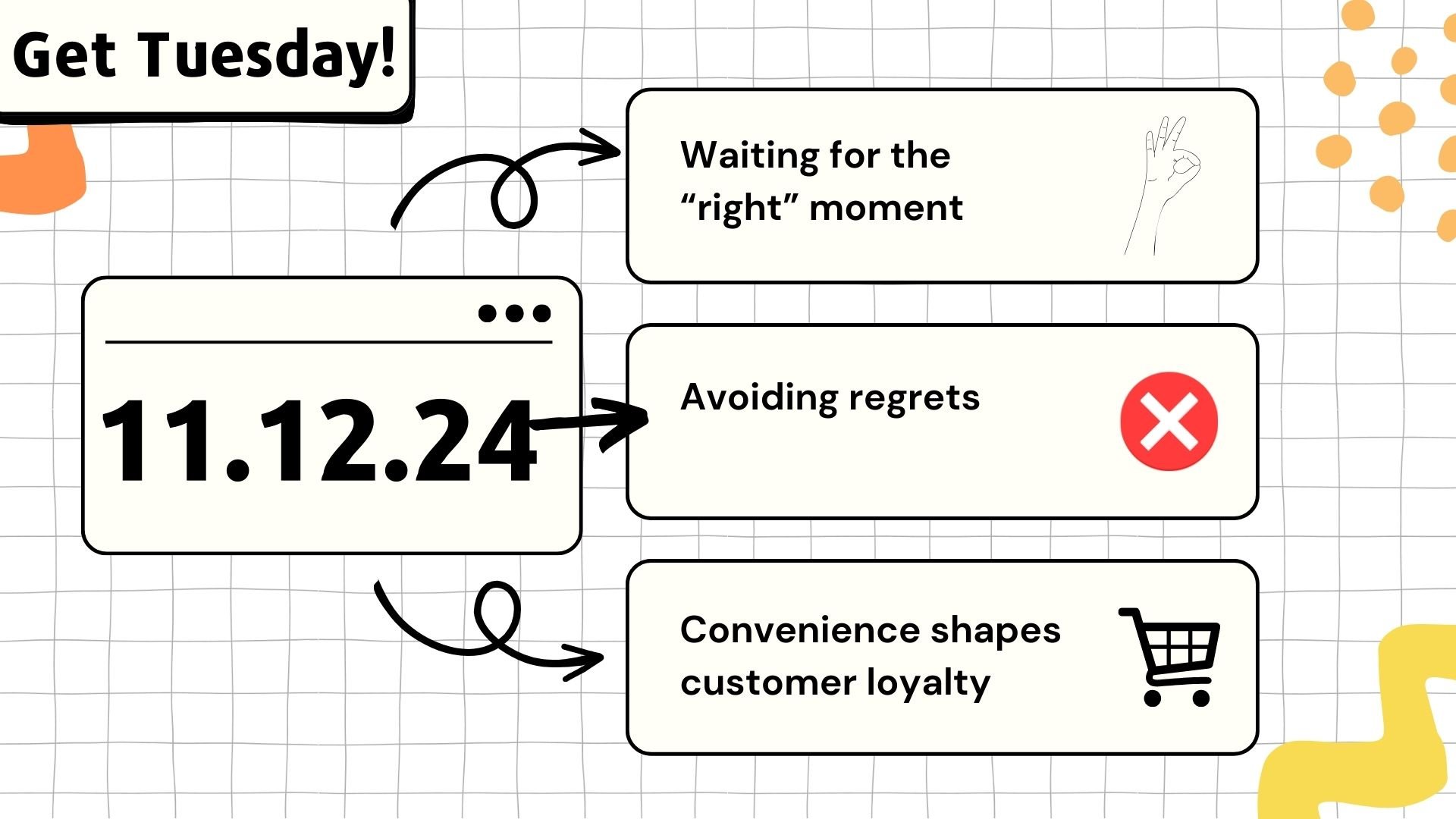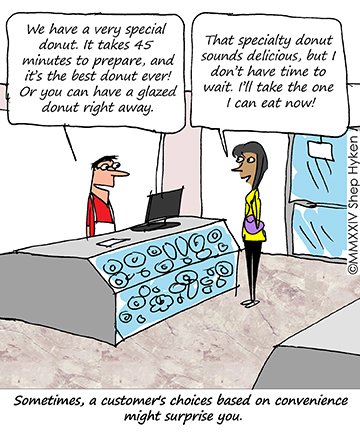Get Tuesday! - November 12, 2024
Welcome to Get Tuesday! We all know that familiar voice in our heads that whispers "not yet" or "wait until the timing is perfect."
But here's the thing - some of the world's most impactful projects, businesses, and transformations started with someone simply deciding that "now" was good enough.
Welcome to this week's newsletter, where we're exploring the power of decisive action, from revitalizing our downtown spaces to understanding how convenience shapes customer loyalty.
We'll dive into why the "right" moment is often just the moment you decide to begin, and how the decisions we make (or don't make) today shape the stories we'll tell tomorrow.
Waiting for the ‘right’ moment
Are you waiting for the 'right' moment?
It might never come.
We're often paralyzed by the illusion that timing is everything. We wait for the stars to align, for the perfect conditions that rarely, if ever, arrive. But the 'right' moment is a myth. It's a construct of our hesitation, a barrier to our progress.
Life's most pivotal shifts rarely happen in the moments we deem perfect. They occur when we leap amidst uncertainty, when we make the moment right through action, not waiting.
Think about it. The biggest opportunities often come disguised as imperfect timing. It's the unexpected job offer when you feel least prepared, the spontaneous idea that turns into a breakthrough project.
These instances don't wait for readiness; they demand a dive into the unknown.
So, why do we wait?
Fear, doubt, the comfort of the status quo. But what if we viewed each moment as the right one? What if, instead of waiting for perfection, we embraced the imperfection of now? The magic lies in starting before you're ready, in learning through doing, not delaying.
The 'right' moment is now, because it's the one you have. Take a step today. Start that project. Pitch that idea. Make the leap.
And watch how the moment becomes right, simply because you dared to see it that way.
Building a better downtown
This excerpt from Noah Smith's blog argues that the unique Japanese retail spaces known as "zakkyo" buildings offer a superior model for urban development compared to the more common "shop-top" buildings found in many cities around the world.
The term "zakkyo" is often translated as "mixed use," but it more specifically refers to these multi-story buildings (typically 3 to 8 stories) filled with various businesses like restaurants, shops, and offices.24 They are essentially vertical strip malls designed for urban pedestrians.56
Two key features set zakkyo buildings apart:
Prominent signage for businesses on upper floors, often illuminated at night, creating the "forest of lights" effect characteristic of Japanese cities.
Street-accessible stairways and elevators that allow easy access to upper-floor shops without passing through a lobby. This design maximizes space efficiency and convenience for pedestrians.
Smith contrasts the two types of development, showing how these zakkyo buildings create a vibrant, walkable urban environment with a high density of diverse businesses.
He posits that this vertical arrangement fosters a culture of discovery and serendipity for shoppers, leading to a greater variety of businesses and a more vibrant retail landscape.
This advocates for the adoption of the zakkyo model in American cities, arguing that it could contribute to a more engaging, diverse, and dynamic urban experience.
Convenience
As Shep shares in his article, imagine rushing to a meeting and needing coffee. Do you choose the artisanal café with amazing lattes and a 15-minute line, or the decent office coffee that takes 60 seconds?
This simple choice reveals a powerful truth about modern business: convenience often trumps quality, price, and even exceptional service.
His 2024 research confirms this, showing that 60% of customers would switch companies due to slow response times, and 43% would pay premium prices just to avoid waiting for support.
The message is clear: every moment of wasted customer time – whether it's long checkout lines, understaffed stores, redundant paperwork, or support hold times – is a potential lost customer.
In today's fast-paced world, time is the one resource customers can never get back. They might forgive a higher price point or occasional quality issues, but they won't forget feeling like their time was wasted.
The businesses that win tomorrow will be those that eliminate these friction points today, creating experiences so seamless that customers keep coming back simply because they know their time is respected.
A convenient experience is about eliminating friction, and wasted time is friction.
Once time is gone, you can’t get it back.
Avoiding regrets
Sam Altman on avoiding regrets:
“If you think you’re going to regret not doing something, you should probably do it. Regret is the worst, and most people regret far more things they didn’t do than things they did do.”



